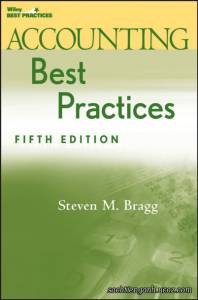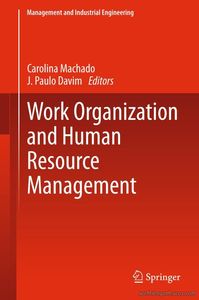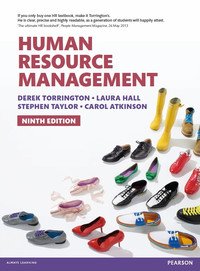
2007 | 509 Pages | ISBN: 9780470081822 | pdf | 3.79 Mb
A chief executive officer (CEO) spends months deciding on a corporate strategy. The plan probably includes a mix of changes in products, customers, and markets, as well as demands for increased efficiencies or information in a number of existing areas. The CEO then hands off the plan to a group of managers who are quite capable of implementing many of the changes, but who scratch their heads over how to squeeze greater efficiencies or information out of existing departments in order to meet their strategic goals. This is where best practices come into play.
A best practice is really any improvement over existing systems, though some consultants prefer to confine the definition to those few high-end and very advanced improvements that have been successfully installed by a few world class companies. This book uses the broader definition of any improvement over existing systems, since the vast majority of companies are in no position, in terms of either technological capabilities, monetary resources, or management skill, to make use of truly world-class best practices. Using this wider definition, a best practice can be anything that increases the existing level of efficiency, such as switching to blanket purchase orders, signature stamps, and procurement cards to streamline the accounts payable function. It can also lead to improved levels of reporting for use by other parts of the company, such as activity-based costing, target costing, or direct costing reports in the costing function. Further, it can reduce the number of transaction errors, by such means as automated employee expense reports, automated bank account deductions, or a simplified commission calculation system. By implementing a plethora of best practices, a company can greatly improve its level of efficiency and information reporting, which fits nicely into the requirements of most strategic plans. |

 Auggie & Me gives readers a special look at Auggie’s world through three new points of view. Previously only available in ebook, now they’ll be published all together--complete with an introduction from the author on how she came to write them--in a gorgeous hardcover package!
Auggie & Me gives readers a special look at Auggie’s world through three new points of view. Previously only available in ebook, now they’ll be published all together--complete with an introduction from the author on how she came to write them--in a gorgeous hardcover package!  Living with Debt focuses on how to manage sovereign debt safely and effectively. The report traces the history of sovereign borrowing in Latin America, releases a new data set on public debt, and analyzes the evolution of debt, highlighting the recent trend toward higher levels of domestic debt and lower external borrowing. The report also includes a detailed study of the costs of sovereign defaults such as those that have affected some Latin American countries in recent years....
Living with Debt focuses on how to manage sovereign debt safely and effectively. The report traces the history of sovereign borrowing in Latin America, releases a new data set on public debt, and analyzes the evolution of debt, highlighting the recent trend toward higher levels of domestic debt and lower external borrowing. The report also includes a detailed study of the costs of sovereign defaults such as those that have affected some Latin American countries in recent years....  The 11th Edition of Fundamentals of Human Resource Management helps students understand and remember concepts through a straightforward and conversational writing style and a wealth of examples to clarify ideas and build interest. The authors provide a strong foundation of essential elements of Human Resource Management as well as a clear understanding of how Human Resource Management links with business strategy. Through practical applications, the authors illustrate the importance of employees...
The 11th Edition of Fundamentals of Human Resource Management helps students understand and remember concepts through a straightforward and conversational writing style and a wealth of examples to clarify ideas and build interest. The authors provide a strong foundation of essential elements of Human Resource Management as well as a clear understanding of how Human Resource Management links with business strategy. Through practical applications, the authors illustrate the importance of employees...  This book provides support to academics as well as managers, who deal with policies and strategies related to work issues. Effective work practices and good employee relations are a real necessity of nowadays organizations, as they can help to reduce absenteeism, employee turnover and organizational costs. Instead, they support high levels of commitment, effectiveness, performance as well as productivity. The book focusses on the implications of those changes in productivity and organizations ma...
This book provides support to academics as well as managers, who deal with policies and strategies related to work issues. Effective work practices and good employee relations are a real necessity of nowadays organizations, as they can help to reduce absenteeism, employee turnover and organizational costs. Instead, they support high levels of commitment, effectiveness, performance as well as productivity. The book focusses on the implications of those changes in productivity and organizations ma...  This book presents a practical and realistic approach to the study of human resource management. Concentrating on a common theme - the interrelationships among human resource management functions - the new edition features increased emphasis on multinational issues, a new section on total quality management and new coverage of how organizations respond to external environments....
This book presents a practical and realistic approach to the study of human resource management. Concentrating on a common theme - the interrelationships among human resource management functions - the new edition features increased emphasis on multinational issues, a new section on total quality management and new coverage of how organizations respond to external environments....